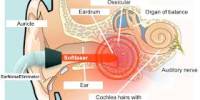It might be challenging to determine whether medications or dietary supplements with twisted or chiral components are rotating in the right direction. According to recent research performed by the University of Michigan, spinning infrared light may now be used to examine both the structures and twists of molecular crystals.
The method may also be used to identify dangerous molecular twisting in the body, such as insulin fibrils, bladder stones, and amyloid aggregations like the plaques associated with Alzheimer’s disease.
In a world of curled molecules, biology often favors right or left-handed versions. You might notice as you walk down the aisle of supplements that some names have a L or D before them. The letters L and D indicate whether the molecule twists in a clockwise or counterclockwise orientation; the human body normally only uses one type.
The improper twist on a molecule might make it a nuisance filler or result in unfavorable or hazardous side effects. However, it might be difficult to ensure the quality of twisted molecules, and most storage facilities don’t regularly check the chiral composition of medications and dietary supplements.
“The methods most commonly used at pharmaceutical companies are very sensitive to impurities, but measuring chirality is expensive,” said Wonjin Choi, a research fellow in chemical engineering at U-M and first author of the paper in Nature Photonics.
The new technique uses terahertz light, a subset of the infrared spectrum, to swiftly identify incorrect twists and incorrect chemical structures in packaged pharmaceuticals. An international team, including researchers at the Federal University of São Carlos, Brazil; Brazilian Biorenewables National Laboratory; University of Notre Dame; and Michigan State University, developed it.
We foresee new roads ahead for instance using terahertz waves with tailored polarization to manipulate large molecular assemblies. It might replace microwaves in many synthesis applications in which the handedness of the molecules matters.
Professor André Farias de Moura
“Biomolecules support twisting, long-range vibrations also known as chiral phonons. These vibrations are very sensitive to the structure of molecules and their nanoscale assemblies, creating the fingerprint of a particular chiral structure,” said Nicholas Kotov, the Irving Langmuir Distinguished University Professor of Chemical Sciences and Engineering at U-M and co-corresponding author.
In the spectra of twisted terahertz light that traveled through the investigated materials, the team was able to measure these phonons. One of these, L-carnosine, is currently used as a nutritional supplement.
“If the twist of the molecule is wrong, if the twist in the way the molecules pack together is not right, or if different materials were mixed in, all of that could be inferred from the spectra,” Kotov said.
John Kruger, professor of veterinary medicine at Michigan State University and co-author of the paper, provided bladder stones from dogs, and the team discovered their chiral signature.
The research team believes that its discoveries may eventually make it possible for humans and dogs to receive quick diagnoses. They also observed insulin as it developed into inactive nanofibers. The terahertz light technology may be able to validate the efficacy of insulin if it can be used to home healthcare.
The team also explored how light can influence structures, rather than just measure them. Calculations carried out by André Farias de Moura, professor of chemistry at the Federal University of São Carlos and co-corresponding author, show that multiple biomolecules vigorously twist and vibrate when terahertz light generates chiral phonons.
“We foresee new roads ahead for instance using terahertz waves with tailored polarization to manipulate large molecular assemblies. It might replace microwaves in many synthesis applications in which the handedness of the molecules matters,” said de Moura.
Based on de Moura’s calculations, Kotov and Choi believe that the twisting vibrations of chiral phonons caused by terahertz light may make disease-causing nanofibers more vulnerable to medical interventions. Future work will explore whether that interaction can be used to break them up.
This work was supported by the U.S. Department of Defense, Office of Naval Research, Defense Advanced Research Projects Agency and National Science Foundation; Brazilian funding agencies CAPES and FAPESP; Japanese Society for the Promotion of Science and Yoshida Foundation; and U-M.
The materials were studied at the Michigan Center for Materials Characterization. Kotov is also the Joseph B. and Florence V. Cejka Professor of Engineering and professor of chemical engineering, materials science and engineering, and macromolecular science and engineering.
In summary, chiral drugs and supplements are important because they can have different biological effects depending on their enantiomeric purity, which must be evaluated to ensure their safety and efficacy.
















